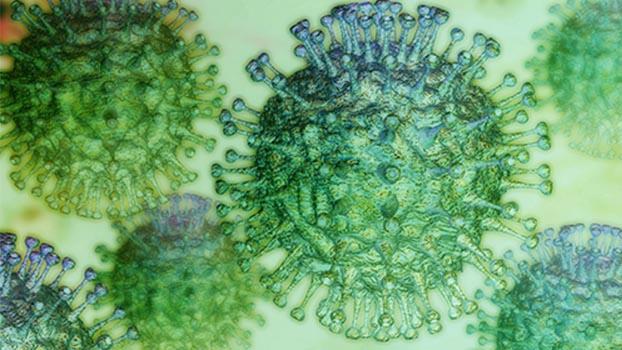Stigma, fear can hamper response

The WHO, Unicef and the International Federation of Red Cross (IFRC) have warned against stigma and fear around the coronavirus disease for better response.
“Evidence clearly shows that stigma and fear around communicable diseases hamper the response,” they said in a guide for preventing and addressing social stigma associated with the coronavirus disease.
They suggest government and policymakers to build trust with ‘reliable health services and advice’, among many measures.
Bangladesh confirmed 48 people with the COVID-19. Of them, five died. But stigma and fear run so high that burial of the deceased have been denied in some places.
People with fever, which is one of the symptoms of coronavirus, have been denied access to healthcare in many places. There is no on-demand testing facility to confirm the diagnosis. On Saturday, local people staged demonstrations in the Tejgaon area of Dhaka to prevent building a hospital for coronavirus patients by a business group.
“Naturally people are worried and anxious about their safety. And such a mental condition usually people lose logical thinking and reasoning power,” Roufun Naher, a teacher of Dhaka University’s Department Educational and Counselling Psychology, told Bangladesh Post.
“They (people) are trying to ensure their safety in their own way, unfortunately which are unhelpful for them and the people around them,” she said.
“The policymakers and civil society need to assure their physical as well as psychological wellbeing through evidence-based information”.
The WHO, Unicef and the IFRC guide is intended to support governments, media and local organisations for preventing such stigma and fear.
It said the level of stigma associated with COVID-19 is based on three main factors -- it is a disease that is new and for which there are still many unknowns; people are often afraid of the unknown; and it is easy to associate that fear with ‘others’.
They said it is understandable that there is confusion, anxiety, and fear among the public. Unfortunately, these factors are also fuelling harmful stereotypes.
Such treatment can negatively affect those with the disease, as well as their caregivers, family, friends and communities. People who do not have the disease but share other characteristics with this group may also suffer from stigma.
“This can result in more severe health problems and difficulties controlling a disease outbreak.
“Stigma can drive people to hide the illness to avoid discrimination, prevent people from seeking health care immediately, and discourage them from adopting healthy behaviours.”
“What works is building trust in reliable health services and advice, showing empathy with those affected, understanding the disease itself, and adopting effective, practical measures so people can help keep themselves and their loved ones safe,” they said.
“How we communicate about COVID-19 is critical in supporting people to take effective action to help combat the disease and to avoid fuelling fear and stigma.
“An environment needs to be created in which the disease and its impact can be discussed and addressed openly, honestly and effectively.”
The joint guideline suggests that when talking about coronavirus disease, certain words (such as, suspect case, isolation…) and language may have a negative meaning for people and fuel stigmatising attitudes.
They can perpetuate existing negative stereotypes or assumptions, strengthen false associations between the disease and other factors, create widespread fear, or dehumanise those who have the disease, according to the guide.
“This can drive people away from getting screened, tested and quarantined.
“We recommend a ‘people first’ language that respects and empowers people in all communication channels, including the media,” they said.
The organisations further said, “Words used in media are especially important, because these will shape the popular language and communication on the new coronavirus (COVID-19).
“Negative reporting has the potential to influence how people suspected to have the new coronavirus (COVID-19), patients and their families and affected communities are perceived and treated.”
For example, they said: “Don’t - refer to people with the disease as “COVID-19 cases” or “victims”. DO - talk about “people who may have COVID-19” or “people who are presumptive for…”
“Don’t - talk about “COVID-19 suspects” or “suspected cases”. DO - talk about people “acquiring” or “contracting” COVID-19”.
“Don’t talk about people “transmitting COVID-19” “infecting others” or “spreading the virus” as it implies intentional transmission and assigns blame.”
“Using criminalising or dehumanising terminology creates the impression that those with the disease have somehow done something wrong or are less human than the rest of us, feeding stigma, undermining empathy, and potentially fuelling wider reluctance to seek treatment or attend screening, testing and quarantine.
“DO - speak accurately about the risk from COVID-19, based on scientific data and latest official health advice.
“Don’t - repeat or share unconfirmed rumours, and avoid using hyperbolic language designed to generate fear like “plague”, “apocalypse” etc.
“DO - talk positively and emphasise the effectiveness of prevention and treatment measures. For most people this is a disease they can overcome.
“Don’t - emphasise or dwell on the negative, or messages of threat. We need to work together to help keep those who are most vulnerable safe.
“DO - emphasise the effectiveness of adopting protective measures to prevent acquiring the new coronavirus, as well as early screening, testing and treatment.”
They also suggest the government engaging social influencers such as religious leaders on prompting reflection about people who are stigmatised and how to support them, or respected celebrities to amplify messages that reduce stigma.
They also suggest amplifying the voices, stories and images of local people who have experienced the new coronavirus and have recovered or who have supported a loved one through recovery to emphasise that most people do recover from COVID-19.
“Also, implementing a “hero” campaign honouring caretakers and healthcare workers who may be stigmatized,” according to the guide. “Community volunteers also play a great role in reducing stigma in communities”.




